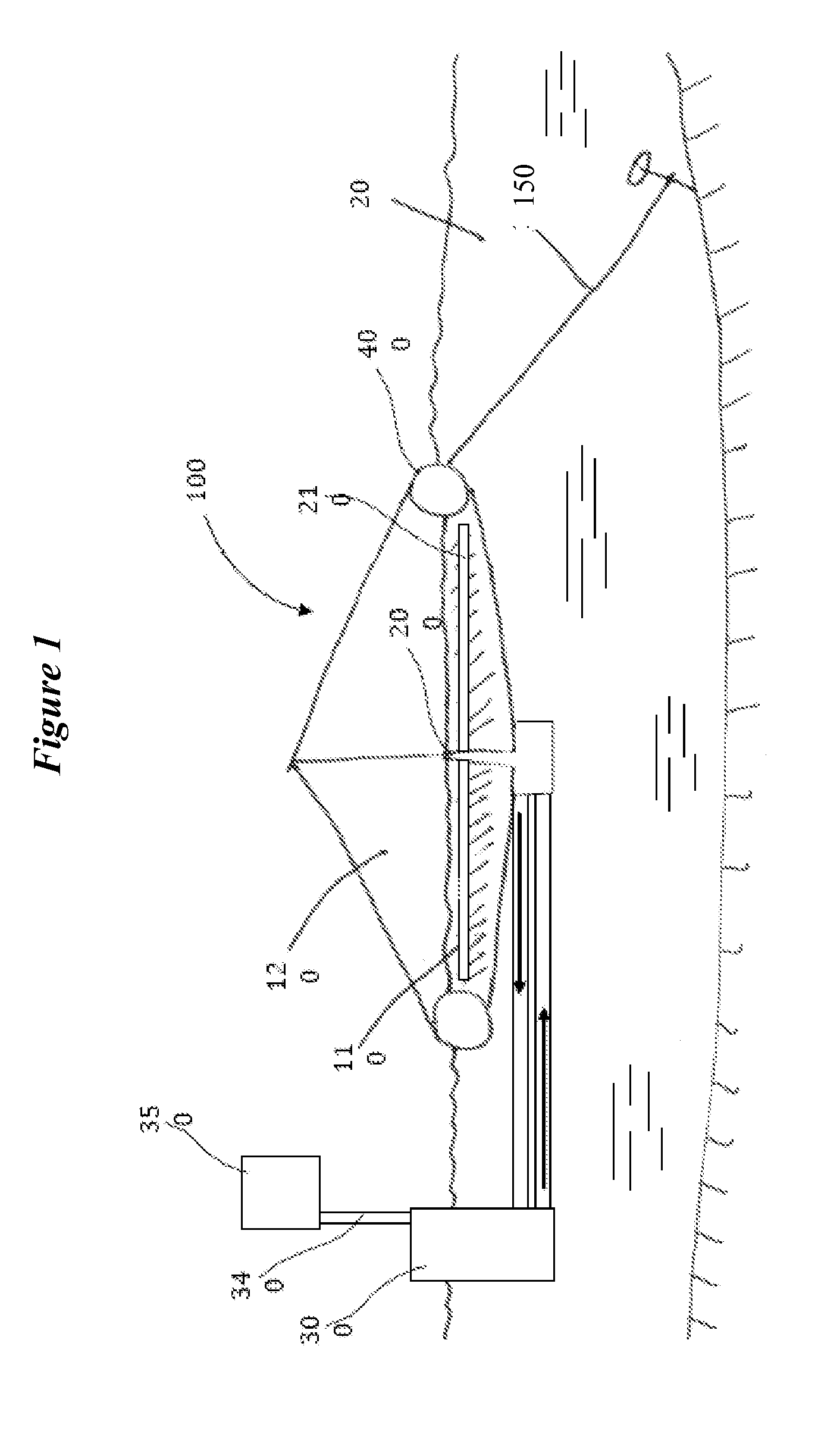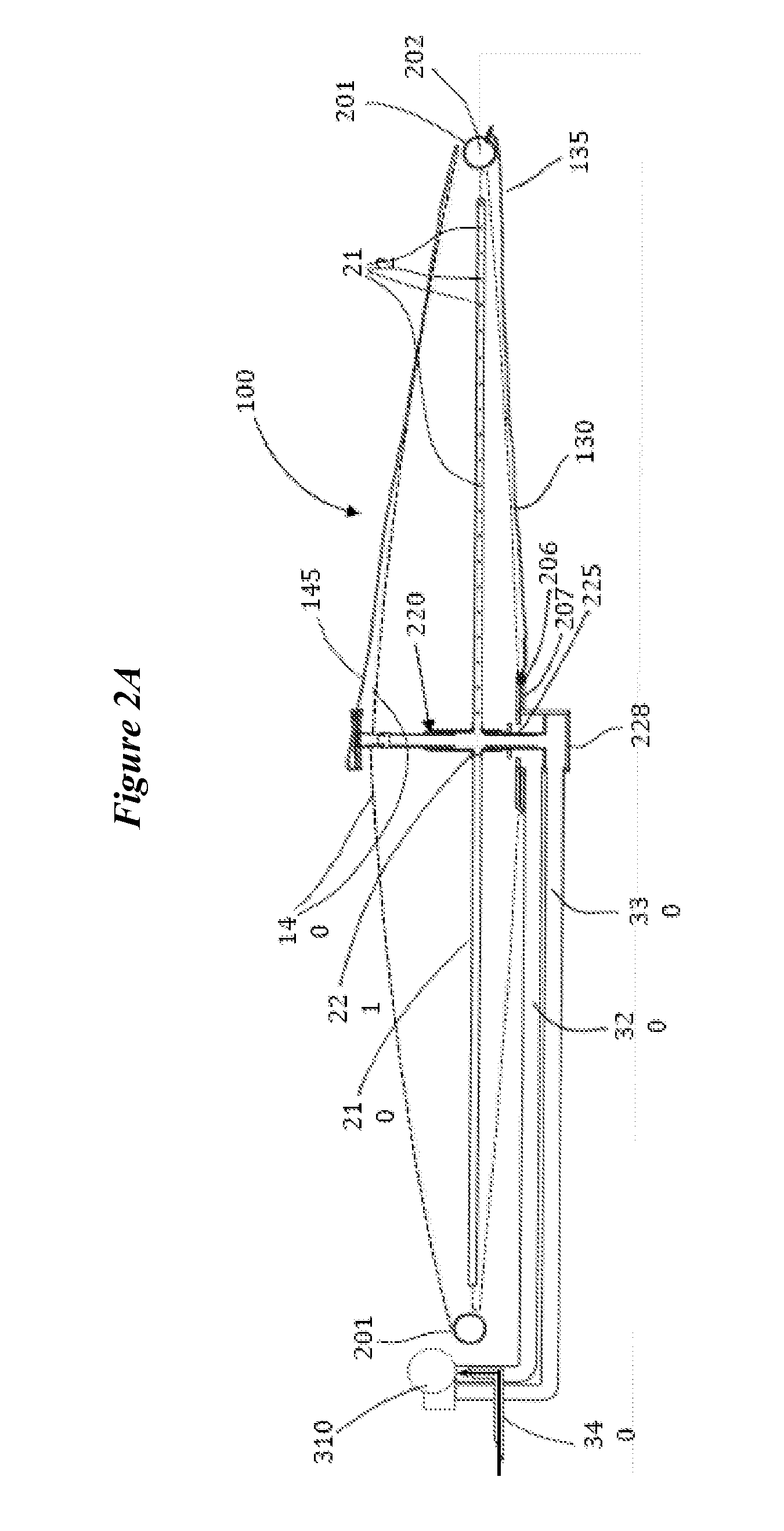Outdoor cultivator for photosynthetic microorganisms
a technology of photosynthetic microorganisms and cultivators, which is applied in the field of outdoor cultivation systems for photosynthetic microorganisms, can solve the problems of high cost of cosub>2 /sub>sources, low-value biomass products, and inability to achieve low-concentration cosub>2 /sub>sources, etc., and achieve the effect of improving the thermal control of the culture fluid
- Summary
- Abstract
- Description
- Claims
- Application Information
AI Technical Summary
Benefits of technology
Problems solved by technology
Method used
Image
Examples
example 1
Exemplified Embodiment of Floating Cultivator for Phototrophic Organisms
[0096]FIGS. 8-11 illustrate an embodiment of the floating cultivator floating in an above-ground pool. The cultivator is comprised of a floating ring with a central mast and flexible bottom and top layers. The floating cultivator is depicted as the ring (801), upper canopy (802), lower canopy (not visible in drawing), and central mast (not visible in drawing). Upper pipes (or tubes) are for air supply into (803) and out of (804) the upper canopy. Fresh air is taken in through an inlet air filter (805). The flow of fresh air into the cultivator is facilitated by an inlet blower or fan (806); the flow of oxygen-rich air out of the cultivator is facilitated by an outlet blower or fan (807). Fluid lines (e.g., pipes or tubes) below (808) go to a recirculating pump (809). The air lines and the culture fluid lines may be rigid or flexible depending on what is appropriate for a particular installation and the expected ...
PUM
| Property | Measurement | Unit |
|---|---|---|
| depth | aaaaa | aaaaa |
| depth | aaaaa | aaaaa |
| depth | aaaaa | aaaaa |
Abstract
Description
Claims
Application Information
 Login to View More
Login to View More - R&D
- Intellectual Property
- Life Sciences
- Materials
- Tech Scout
- Unparalleled Data Quality
- Higher Quality Content
- 60% Fewer Hallucinations
Browse by: Latest US Patents, China's latest patents, Technical Efficacy Thesaurus, Application Domain, Technology Topic, Popular Technical Reports.
© 2025 PatSnap. All rights reserved.Legal|Privacy policy|Modern Slavery Act Transparency Statement|Sitemap|About US| Contact US: help@patsnap.com



